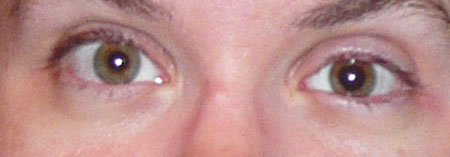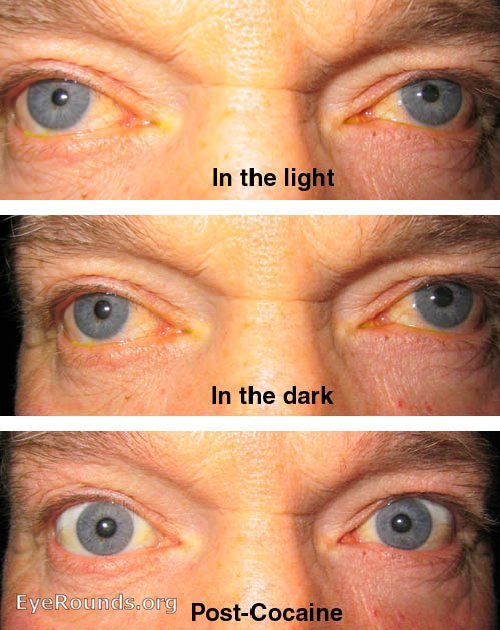
Your fight or flight response is designed to protect you from harm. Other changes include tightened muscles, an increased heart-rate and increased blood flow to your peripheries. That adrenaline prepares your body to fight or flee, and one of the ways it does that is by dilating your pupils. During periods of intense anxiety – especially during panic attacks – your entire body goes into fight or flight mode, and you go through some immediate physical changes as a response.įor example, during anxiety episodes, your body receives a rush of adrenaline. If your dog became blind as a result of the underlying disease, it is extremely unlikely that the blindness will be reversible.People think of anxiety as a mental condition. In some cases, your dog may require long-term medication to control the underlying cause.
#Uneven pupil dilation full#
The prognosis for full recovery depends upon the cause of the anisocoria. Your veterinarian will discuss the treatment options that are appropriate for your dog's individual circumstances. The treatment of anisocoria depends entirely on the underlying cause of the condition, and specific treatment will be tailored specifically to the diagnosis.

In some cases, your veterinarian may recommend a referral to a veterinary ophthalmologist for further diagnostic testing. Blood tests may be performed to determine if the condition is related to a systemic condition. The cornea may be stained with fluorescein dye to look for underlying corneal injuries or ulcers, and conjunctival scrapings or biopsies may be obtained and sent to a diagnostic laboratory for specialized testing. Depending on these preliminary findings, your veterinarian may do some further, more specific testing, such as measure the tear production and intraocular pressure (pressure within the eyes) for each eye. Your veterinarian will begin by conducting a physical examination of your dog, including a detailed examination of the structures of the eye. How is the cause of anisocoria diagnosed? In other cases, depending on the underlying cause, the white part of the affected eye might be red, the cornea (outer surface of the eye) might be cloudy or bluish in color, there might be a discharge from the eye, the eyelid on the affected eye might be droopy, the dog might be squinting or rubbing at its eye, or you might notice that your pet is less active than usual. In some cases, that might be all that you notice. In all cases of anisocoria, the pupil in one eye will be bigger or smaller than the one in the other eye. If anisocoria occurs suddenly, you should consider this an emergency and seek veterinary care immediately to lessen the chance that your dog's vision will be permanently affected. Congenital defect of the iris, in which the iris tissue does not develop properly.Iris atrophy, or a decrease in the amount of tissue within the iris, usually a degenerative change associated with aging.Scar tissue formation between the iris and the lens (called posterior synechia), a condition that may develop subsequent to uveitis.Uveitis, or inflammation of the interior of the eye (the pupil in the affected eye will usually be constricted).Glaucoma, a disease in which there is increased pressure within the eye (the pupil in the affected eye will be dilated).Disease or injury to the brain or to the nerves running to the affected eye such as Horner’s syndrome.In some cases, the abnormal pupil may be the one that is smaller and in other cases the abnormal pupil may be the one that is larger.Īnisocoria is a sign of a disease or condition, therefore there can be several different causes, including: What is anisocoria?Īnisocoria is a condition in which the pupils of the dog’s eyes are different sizes in other words, one pupil is larger than the other. The pupil constricts or dilates (enlarges) according to the amount of light that enters the eyes, with both pupils normally dilating in dim light and constricting in bright light.


The pupil is a round opening in the middle of the iris (colored part of the eye) that allows light to pass through the eye to the retina.


 0 kommentar(er)
0 kommentar(er)
